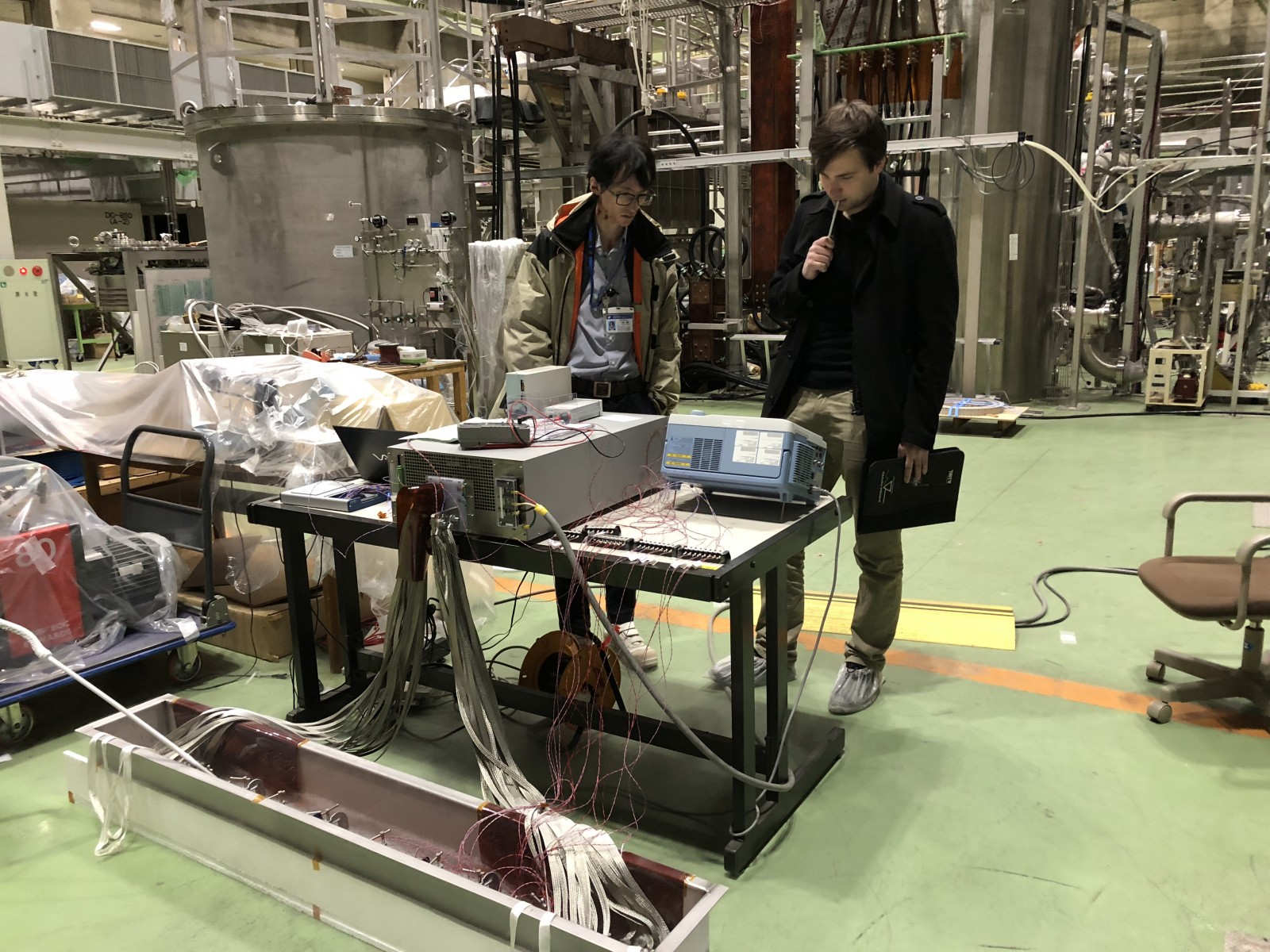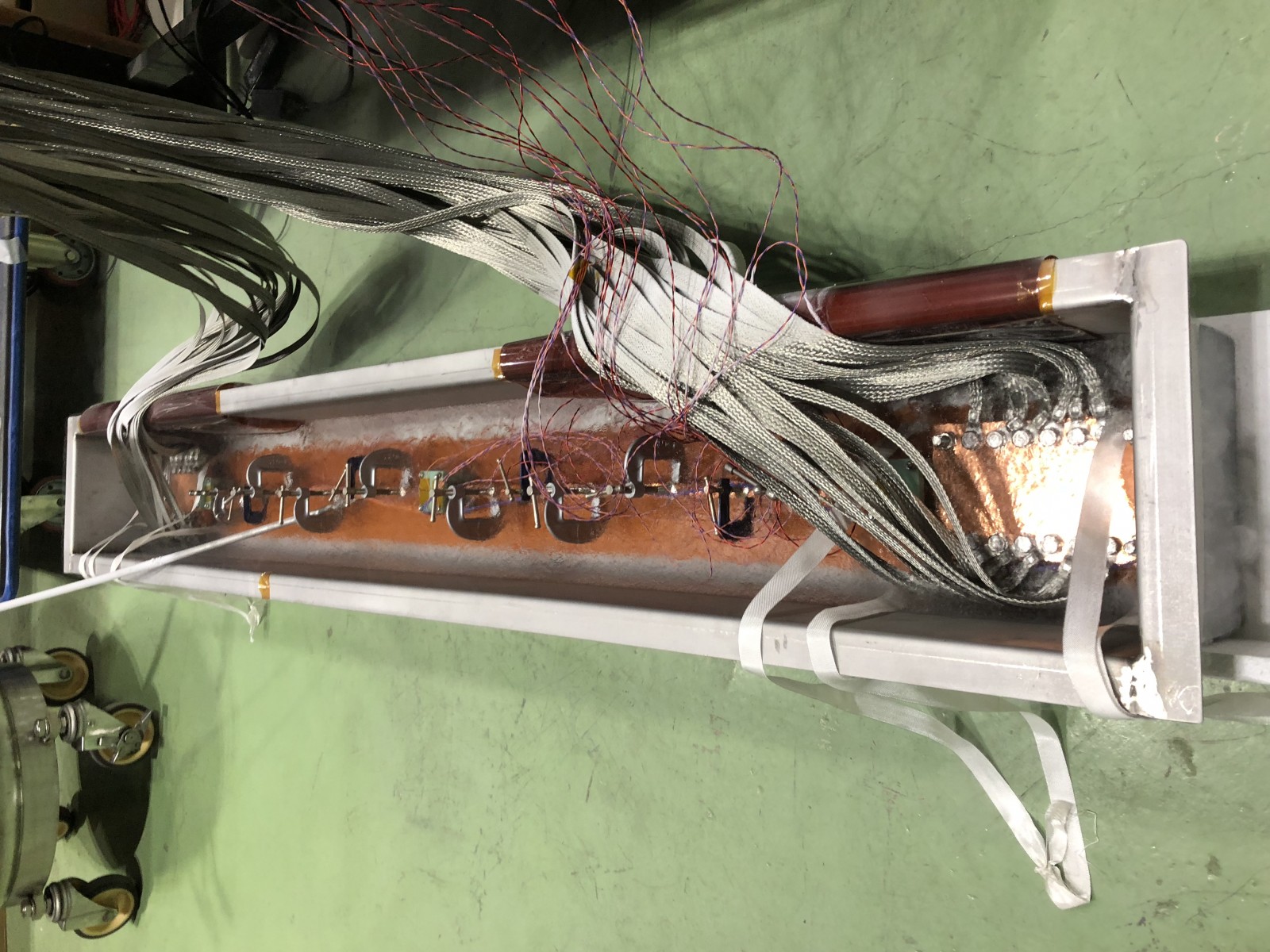I am personally a big fan of stellerators and heliotrons, and thanks to the support from Fusenet, I was able to spend a quarter of a year at the National Institute for Fusion Science (NIFS) in Japan, the place where several heliotrons were designed and built. An additional reason that I picked NIFS for my internship was because they have a state of the art superconductivity lab. To draw a picture, while I was there, they were busy testing the connections for the ITER TF coils in a 5 meter high, liquid helium cooled cryostat (thats -268.8 °C!).
The experiment I performed there involved High Temperature Superconductor (HTS) tapes. HTS tapes have been around for quite a while now, but the step to a reactor scale magnetic coil has not yet been made. Although we are close to building such a coil, there are some key hurdles that have to be overcome before this will be realised. The hurdle that my internship tried to take, concerns the engineering constraints that are applied to twisting the individual tapes into a coil shape. The experiment showed that one particular engineering constraint was unnecessary, bringing us one step closer to a functional HTS coil.

To give you an idea what functional HTS coils could mean for fusion energy, I will have to remind you that net fusion energy using LTS coils, has not yet been achieved. The theory suggests that fusion power is directly related to the strength of the magnetic field produced by the coils, except the limits of LTS conductors have been reached. HTS can create a much higher magnetic field meaning it might be the key to achieving net energy production. On top of that, as the name suggests, it can create this magnetic field at a much higher temperature. This results in a signicant drop in the required power to cool the coils, which is a main energy loss source.

( Picure of the submerged experimental setup)
What I enjoyed most at the National Institute of Fusion Science was the difference in culture and the fact that I lived only 100 meters from my office. The straightforward nature of the Dutch are in sharp contrast with the respectful demeanor of the Japanese, although they do not necessarily clash. In my experience the two cultures, in some aspects, are very much alike, for example in work ethics. To conclude, a final thank you to FuseNet for the support, and a tip for any prospective visitors of Japan: make use of the excellent public transport to explore this beautiful island group as much as you can, it is an experience in and of itself.
